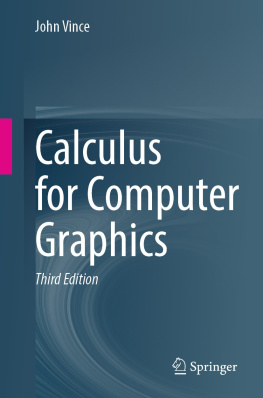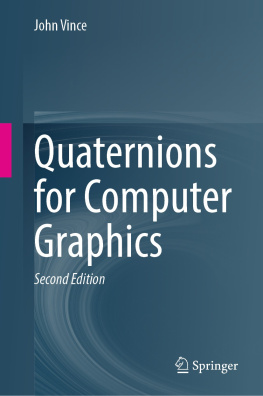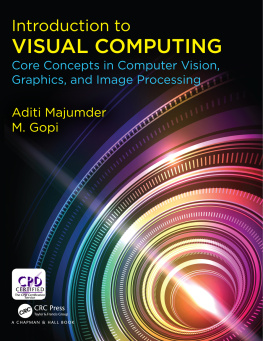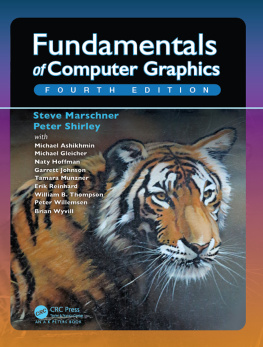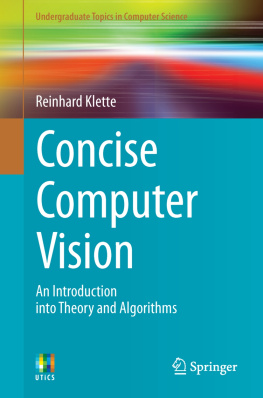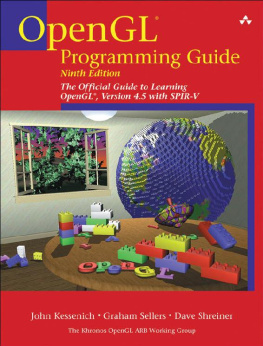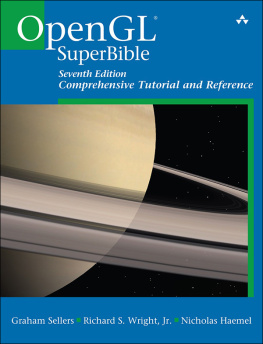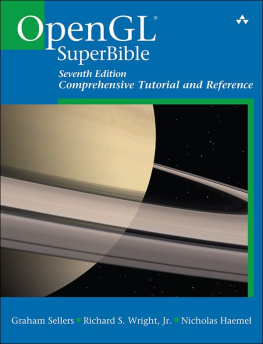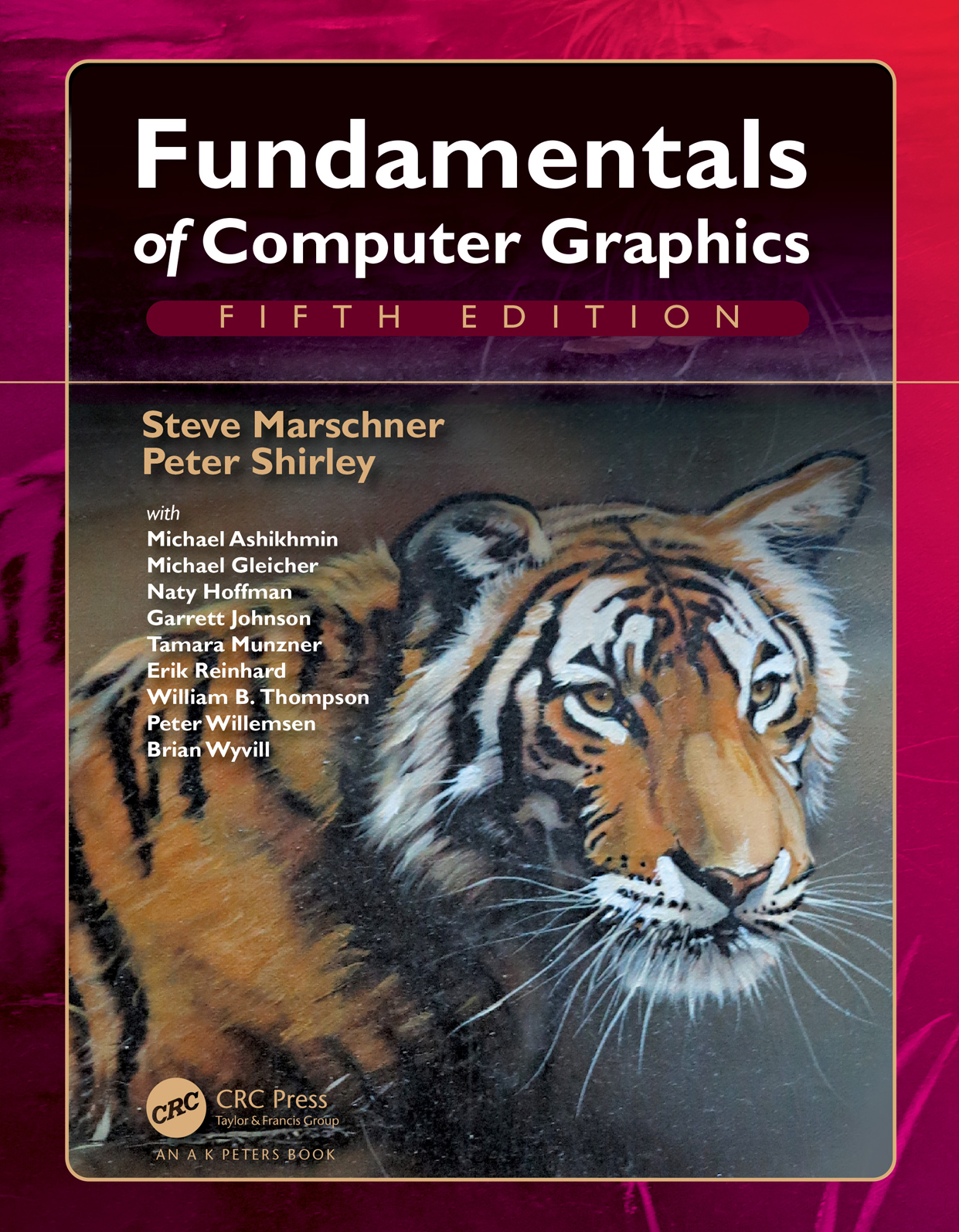
Fundamentals of Computer Graphics
FIFTH EDITION
Fifth edition published 2022
by CRC Press
6000 Broken Sound Parkway NW, Suite 300, Boca Raton, FL 33487-2742
and by Routledge
2 Park Square, Milton Park, Abingdon, Oxon, OX14 4RN
2022 Taylor & Francis Group, LLC
CRC Press is an imprint of Taylor & Francis Group, LLC
Reasonable efforts have been made to publish reliable data and information, but the author and publisher cannot assume responsibility for the validity of all materials or the consequences of their use. The authors and publishers have attempted to trace the copyright holders of all material reproduced in this publication and apologize to copyright holders if permission to publish in this form has not been obtained. If any copyright material has not been acknowledged please write and let us know so we may rectify in any future reprint.
Except as permitted under U.S. Copyright Law, no part of this book may be reprinted, reproduced, transmitted, or utilized in any form by any electronic, mechanical, or other means, now known or hereafter invented, including photocopying, microfilming, and recording, or in any information storage or retrieval system, without written permission from the publishers.
For permission to photocopy or use material electronically from this work, access
Trademark notice Product or corporate names may be trademarks or registered trademarks and are used only for identification and explanation without intent to infringe.
Library of Congress CataloginginPublication Data
Names: Marschner, Steve, author. | Shirley, Peter, author.
Title: Fundamentals of computer graphics / Steve Marschner, Peter Shirley.
Description: 5th edition. | Boca Raton: CRC Press, 2021. | Includes bibliographical references and index. Identifiers: LCCN 2021008492 | ISBN 9780367505035 (hardback) | ISBN 9781003050339 (ebook)
Subjects: LCSH: Computer graphics.
Classification: LCC T385 .M36475 2021 | DDC 006.6dc23
LC record available at https://lccn.loc.gov/2021008492
ISBN: 978-0-367-50503-5 (hbk)
ISBN: 978-0-367-50558-5 (pbk)
ISBN: 978-1-003-05033-9 (ebk)
Typeset in Times
by codeMantra
This edition of Fundamentals of Computer Graphics includes substantial rewrites of the material on shading, light reflection, and path tracing, as well as many corrections throughout. This book now provides a better introduction to the techniques that go by the names of physics-based materials and physics-based rendering and are becoming predominant in actual practice. This material is now better integrated, and we think this book maps well to the way many instructors are organizing graphics courses at present.
The organization of this book remains substantially similar to the fourth edition. As we have revised this book over the years, we have endeavored to retain the informal, intuitive style of presentation that characterizes the earlier editions, while at the same time improving consistency, precision, and completeness. We hope the reader will find the result is an appealing platform for a variety of courses in computer graphics.
About the Cover
The cover image is from Tiger in the Water by J. W. Baker (brushed and air-brushed acrylic on canvas, 16 by 20, www.jwbart.com).
The subject of a tiger is a reference to a wonderful talk given by Alain Fournier (19432000) at a workshop at Cornell University in 1998. His talk was an evocative verbal description of the movements of a tiger. He summarized his point:
Even though modelling and rendering in computer graphics have been improved tremendously in the past 35 years, we are still not at the point where we can model automatically a tiger swimming in the river in all its glorious details. By automatically I mean in a way that does not need careful manual tweaking by an artist/expert.
The bad news is that we have still a long way to go.
The good news is that we have still a long way to go.
Online Resources
The website for this book is .
The following people have provided helpful information, comments, or feedback about the various editions of this book: Ahmet Ouz Akyz, Josh Andersen, Beatriz Trinchao Andrade Zeferino Andrade, Bagossy Attila, Kavita Bala, Mick Beaver, Robert Belleman, Adam Berger, Adeel Bhutta, Solomon Boulos, Stephen Chenney, Michael Coblenz, Greg Coombe, Frederic Cremer, Brian Curtin, Dave Edwards, Jonathon Evans, Karen Feinauer, Claude Fuhrer, Yotam Gingold, Amy Gooch, Eungyoung Han, Chuck Hansen, Andy Hanson, Razen Al Harbi, Dave Hart, John Hart, Yong Huang, John Spike Hughes, Helen Hu, Vicki Interrante, Wenzel Jakob, Doug James, Henrik Wann Jensen, Shi Jin, Mark Johnson, Ray Jones, Revant Kapoor, Kristin Kerr, Erum Arif Khan, Mark Kilgard, Fangjun Kuang, Dylan Lacewell, Mathias Lang, Philippe Laval, Joshua Levine, Marc Levoy, Howard Lo, Joann Luu, Mauricio Maurer, Andrew Medlin, Ron Metoyer, Keith Morley, Eric Mortensen, Koji Nakamaru, Micah Neilson, Blake Nelson, Michael Nikelsky, James OBrien, Hongshu Pan , Steve Parker, Sumanta Pattanaik, Matt Pharr, Ken Phillis Jr, Nicol Pinciroli, Peter Poulos, Shaun Ramsey, Rich Riesenfeld, Nate Robins, Nan Schaller, Chris Schryvers, Tom Sederberg, Richard Sharp, Sarah Shirley, Peter-Pike Sloan, Hannah Story, Tony Tahbaz, Jan-Phillip Tiesel, Bruce Walter, Alex Williams, Amy Williams, Chris Wyman, Kate Zebrose, and Angela Zhang.
Ching-Kuang Shene and David Solomon allowed us to borrow their examples. Henrik Wann Jensen, Eric Levin, Matt Pharr, and Jason Waltman generously provided images. Brandon Mansfield helped improve the discussion of hierarchical bounding volumes for ray tracing. Philip Greenspun (philip.greenspun.com) kindly allowed us to use his photographs. John Spike Hughes helped improve the discussion of sampling theory. Wenzel Jakobs Mitsuba renderer was invaluable in creating many figures. We are extremely thankful to J. W. Baker for helping create the cover Pete envisioned. In addition to being a talented artist, he was a great pleasure to work with personally.
Many works that were helpful in preparing this book are cited in the chapter notes. However, a few key texts that influenced the content and presentation deserve special recognition here. These include the two classic computer graphics texts from which we both learned the basics: Computer Graphics: Principles & Practice (Foley, Van Dam, Feiner, & Hughes, 1990) and Computer Graphics (Hearn & Baker, 1986). Other texts include both of Alan Watts influential books (Watt, 1993, 1991), Hills Computer Graphics Using OpenGL (Francis S. Hill, 2000), Angels Interactive Computer Graphics: A Top-Down Approach Using OpenGL (Angel, 2002), Hugues Hoppes University of Washington dissertation (Hoppe, 1994), and Rogers two excellent graphics texts (Rogers, 1985, 1989).
We would like to especially thank Alice and Klaus Peters for encouraging Pete to write the first edition of this book and for their great skill in bringing a book to fruition. Their patience with the authors and their dedication to making their books the best they can be has been instrumental in making this book what it is. This book certainly would not exist without their extraordinary efforts.
Steve Marschner, Ithaca, NY
Peter Shirley, Salt Lake City, UT
February 2021
Steve Marschner is a Professor of Computer Science at Cornell University. He obtained his Sc.B. from Brown University in 1993 and his Ph.D. from Cornell in 1998. He held research positions at Microsoft Research and Stanford University before joining Cornell in 2002. He is recipient of the SIGGRAPH Computer Graphics Achievement Award in 2015 and co-recipient of a 2003 Technical Academy Award.
Next page

